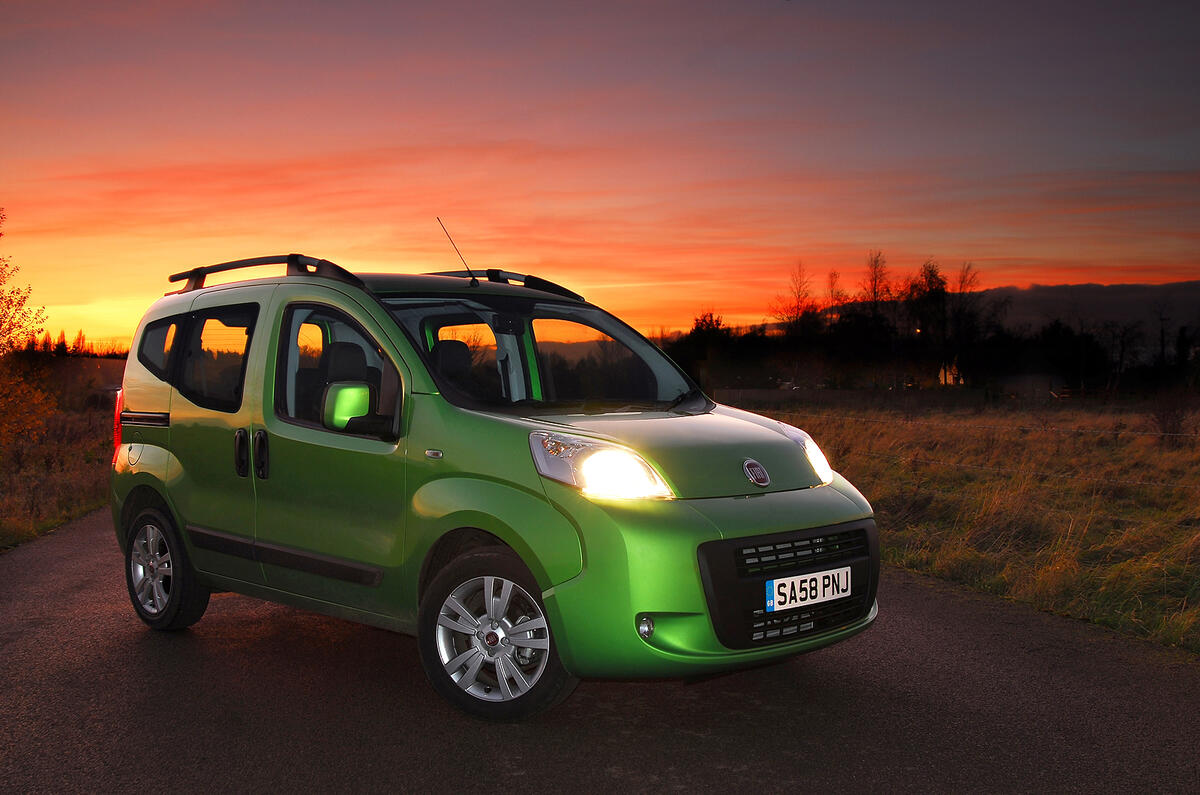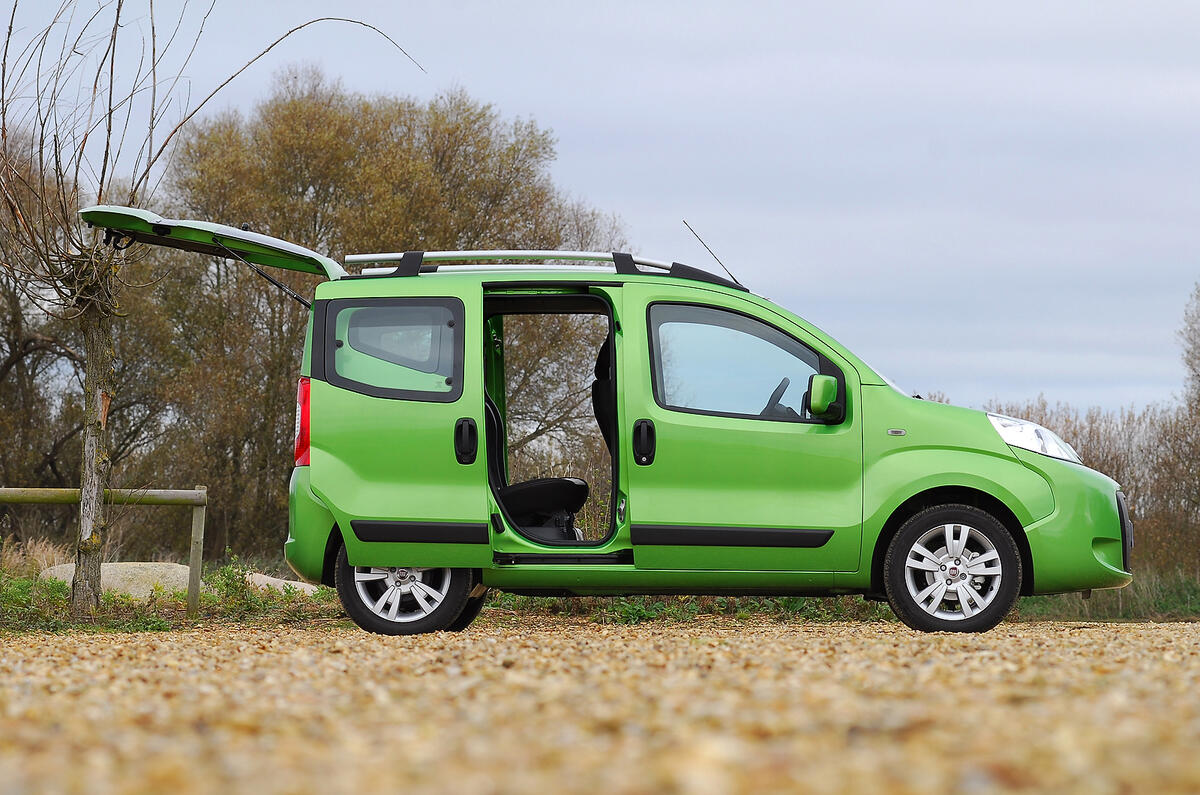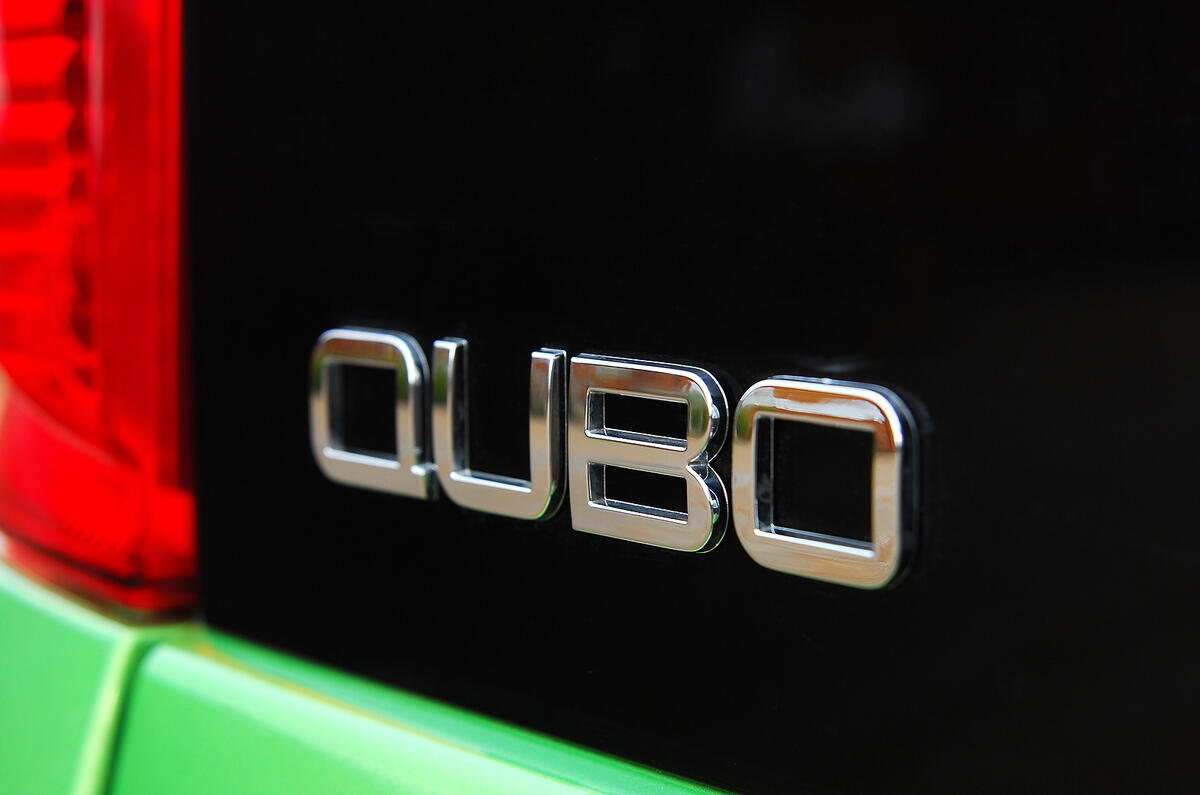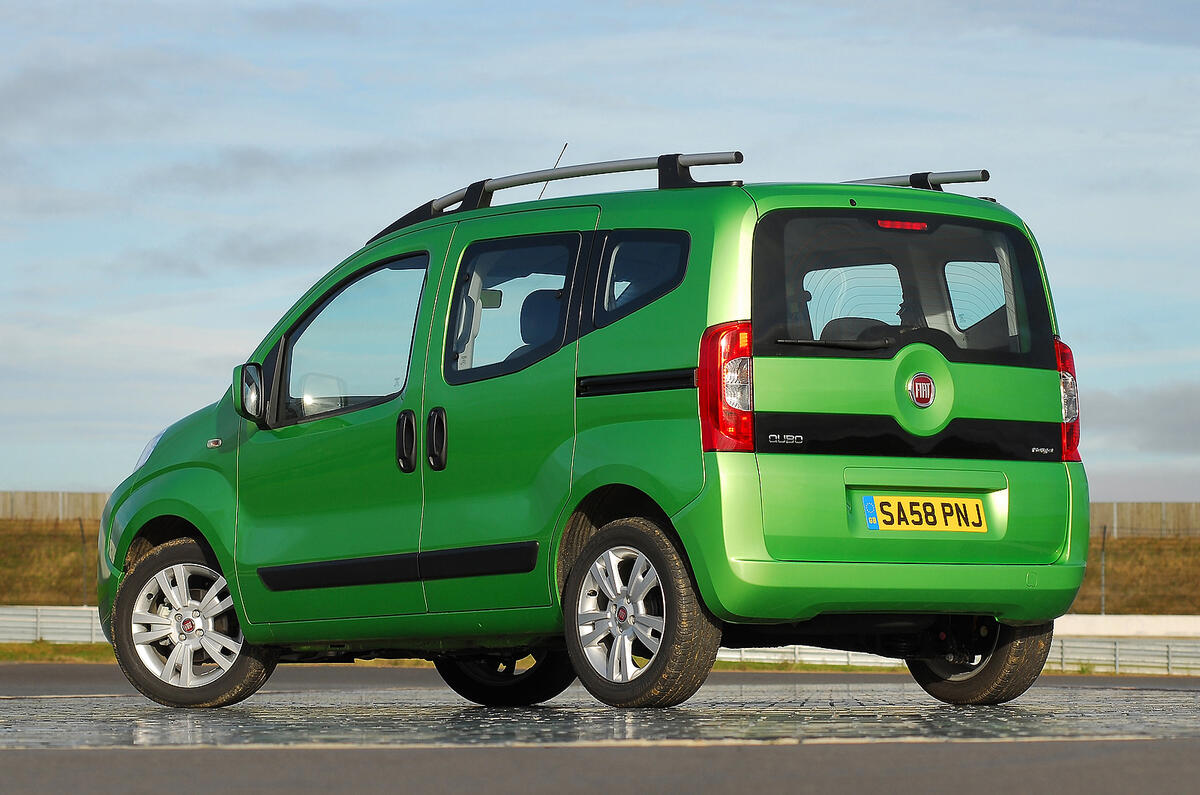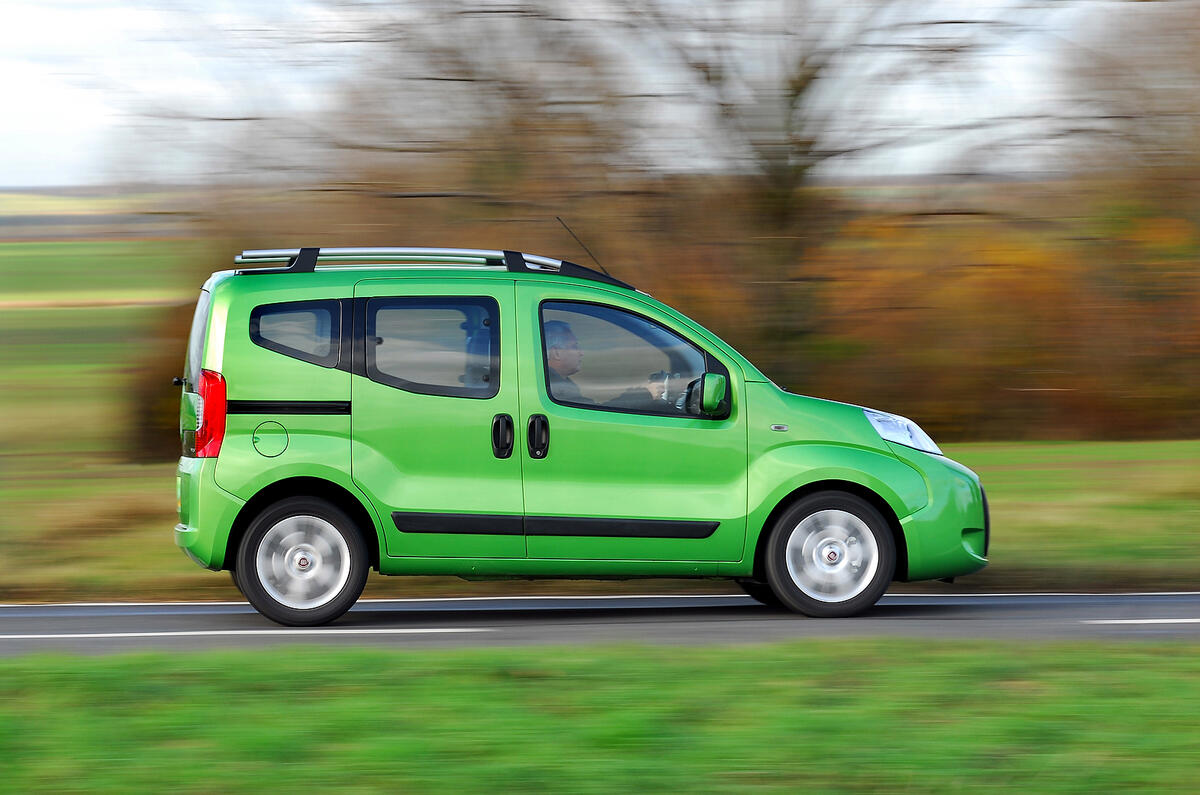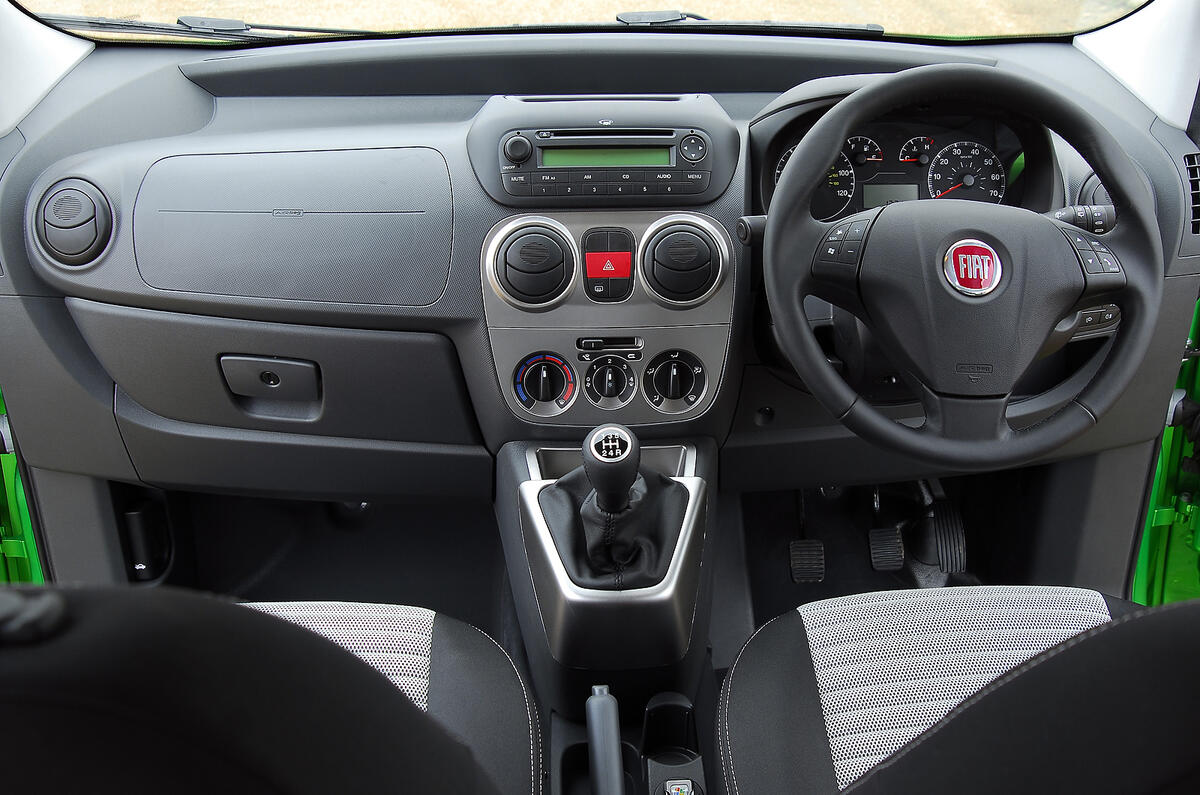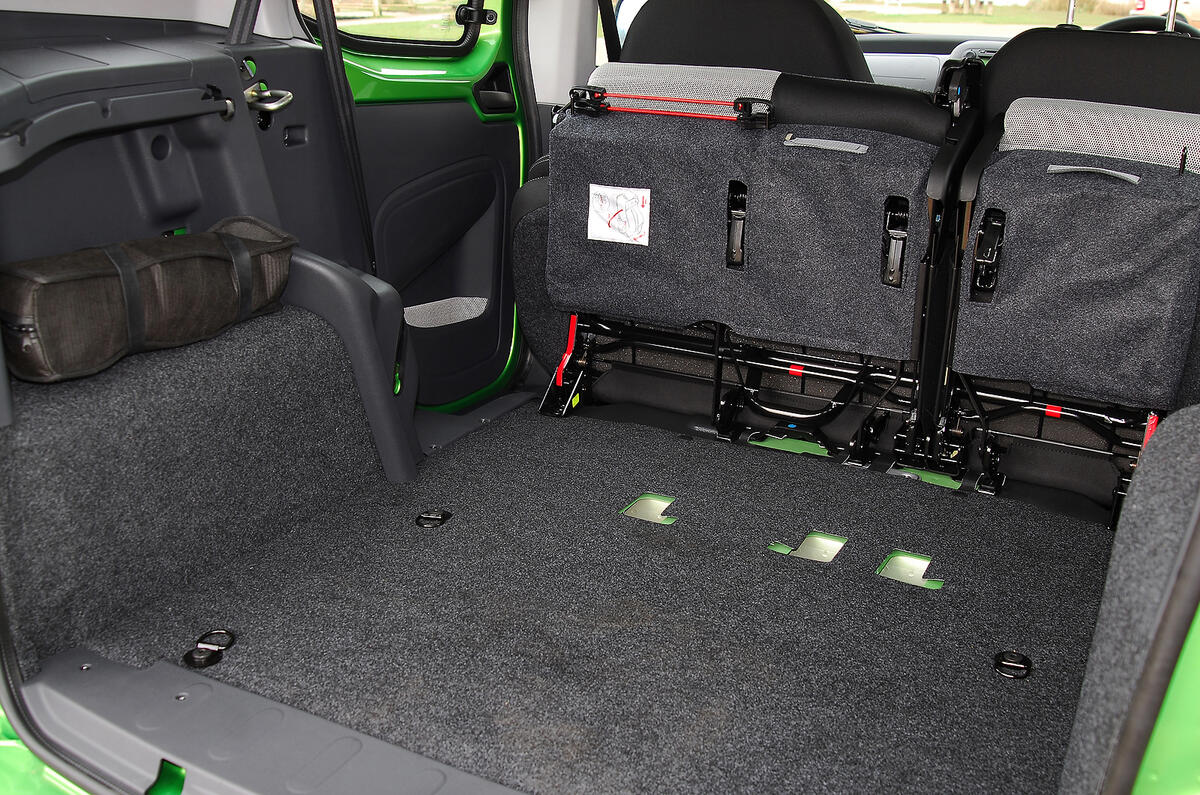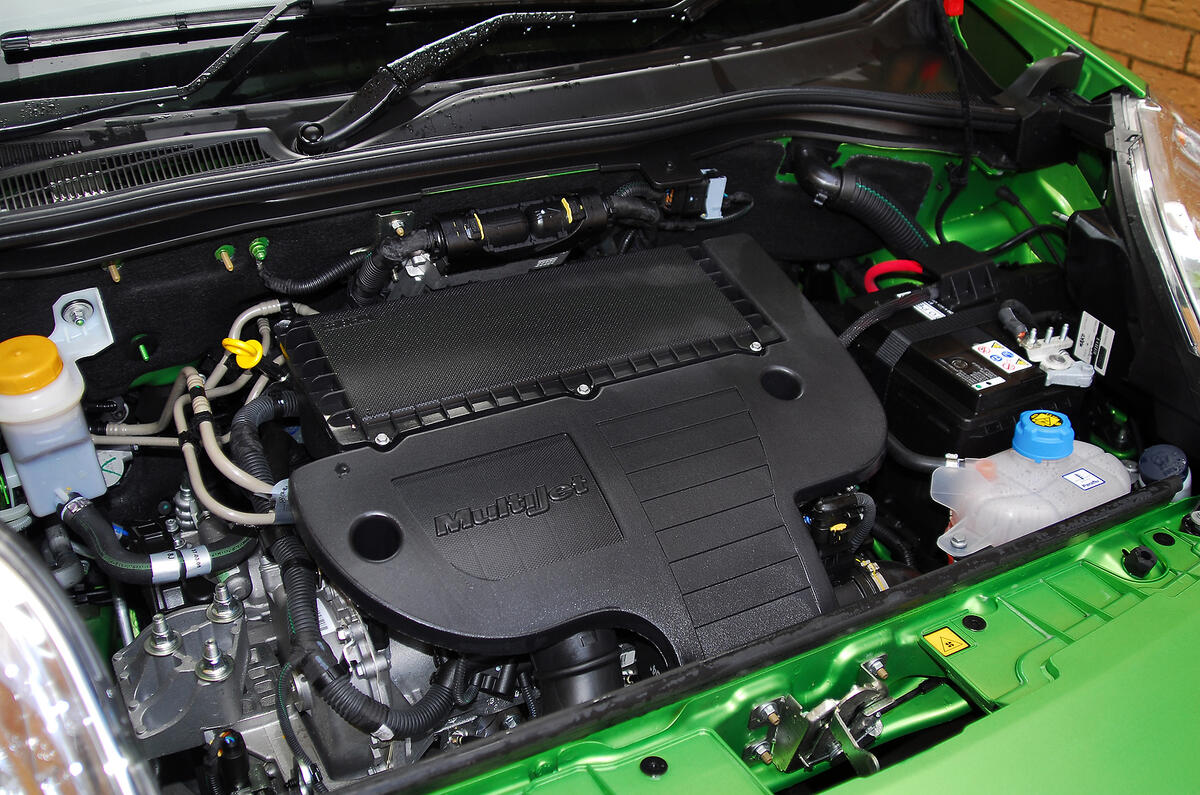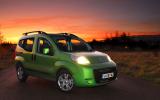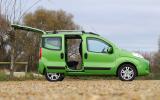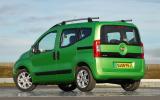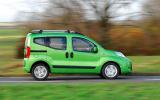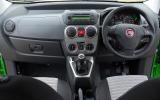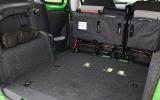The Fiat Qubo is the passenger car version of it Fiorino van - sharing the same underpinnings as the Citroën Nemo and Peugeot Bipper, and thanks to those commercial vehicle roots, it is both practical and solid. It’s not unwieldy, though. Its boxy proportions hide the car’s size, and it’s actually shorter than a Fiat Punto.
Of course, it’s easy to spot the utilitarian shape, even if Fiat has done its best to add some tinsel, such as alloy wheels and roof bars. It isn’t a car for fashionistas. Even if a facelift for 2017 saw Fiat try to lift the commercial stench and give the Qubo more sex-appeal.
As you’d expect from what is essentially a more comfortable van with extra seats, there’s lots of space for people and luggage. Twin sliding doors, removable rear seats and a front passenger seat that folds into the footwell are among the MPV’s features.
The Qubo has manners that are surprisingly car-like on the move. The steering wheel adjusts for reach and rake, and the gearlever is nicely positioned.
The 1248cc MultiJet turbodiesel we tested is fairly refined and powers the Qubo along at a respectable pace. It’s certainly more driveable than its 16.5sec 0-62mph and 97mph top speed suggest. An ample 140lb ft of torque available from 1750rpm helps.
The remainder of the engine line-up comprises a higher-powered version of the MultiJet, developing 95bhp and 147lb ft that cuts the 0-62mph to 12.2sec and raises the top speed to 106mph. A breathless 1.4-litre petrol engine is offered, too, producing 75bhp and 87lb ft – predictably performance isn’t its strong suit - but it pulls well through the gears, and feels faster than its 0-62mph time of 16.2secs suggests. Even so, the engine needs to work hard to maintain momentum at motorway speeds, particularly when faced with an incline or a requirement to overtake.


